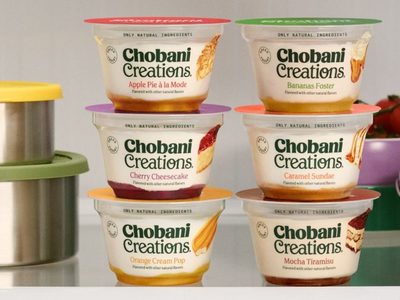SAN ANTONIO — Since its launch in the United States seven years ago, the Whole Grain Stamp has grown rapidly in use. The symbol, which appears on qualifying whole grains products, helps to connect consumers with manufacturers, said Karen Mansur, program manager for Oldways and the Whole Grains Council. Ms. Mansur moderated an Oct. 18 panel discussion at the “Whole grains on every plate” conference in San Antonio.
Since the last W.G.C. conference held in January 2011, the number of W.G.C. members has grown to 342 from 260, and the use of the Whole Grain Stamp has grown to its appearance on more than 7,600 products in 36 countries from 4,700 products in 21 countries.
Sixty-eight per cent of the 7,600 products feature the basic stamp, while 32% include the 100% stamp. Overall, the Whole Grain Stamp helps consumers quickly and easily identify products containing significant amounts of whole grains.
“It’s not just breads and cereals, there is a whole variety of products that are being registered with the stamp, and I think the most exciting I’m seeing behind my desk is the dairy and beverage industry,” Ms. Mansur said, adding she has seen brown rice, oat and quinoa beverages starting to come through. “It’s really exciting to see a Whole Grain Stamp on a huge variety of products.”
Ms. Mansur said the Whole Grain Stamp helps to “demystify” the world of grains and gives consumers a symbol they can connect to and quickly find on packaging.
In addition to Ms. Mansur’s comments, representatives of three W.G.C. member companies provided brief summaries of how the Whole Grain Stamp has affected their business.
Gigi Twist, owner/manager of Upfront Foods, Boca Raton, Fla., said the Whole Grain Stamp is on the only product it offers — Upfront Nutty Granola. The product is in a small, 1.4-oz package, and features 9 natural and organic ingredients and 100% whole grain.
Upfront Nutty Granola is in all 17 Florida Whole Foods stores and in distribution in the New York area. In 2013, the product will go in the Office Depot catalog.
“Having the 100% Whole Grain Stamp has been invaluable to us as a new company,” Ms. Twist said.
“The stamp showed the regional buyer we were serious about our product,” she said. “It shows the consumer that our granola is a smart snack for a healthy breakfast choice. It shows them that we’re making a product they can trust.”
On the other end of the spectrum is Minneapolis-based General Mills, Inc., which has been at the forefront of the whole grains movement through its broad portfolio of Big G cereals. Beginning in January 2013, all General Mills cereals will contain at least 10 grams of whole grains per serving, up from 9 grams currently.
General Mills carries the Whole Grain Stamp because it’s simple and consistent, said Michelle Tucker, M.S., R.D., senior nutrition research scientist at the General Mills Bell Institute of Health and Nutrition.
“We know it’s consistent, it’s simple, it’s recognized by consumers,” Ms. Tucker said. While one in three consumers may not be aware of the stamp, those that are aware like and trust the information they get from the stamp,” she said.
“Additionally, we think the Whole Grain Stamp aligns with our goal of consumer education,” Ms. Tucker said. “It includes that ‘eat at least 48 grams’ context statement that I think is great to help people … easily translate what they’re getting from that product into what their daily intake is. And it also aligns with our perspective that foods that have at least 8 grams of whole grain per serving can contribute significantly to a person’s diet in terms of getting the whole grains we need. Even foods with a little bit of whole grains can help.”
Todd Kluger, vice-president of marketing at Lundberg Family Farms, Richvale, Calif., said his company has about 108 stock-keeping units in the marketplace, of which about three quarters are whole grain.
He said the company’s success with the stamp has come from convincing people to convert from traditional white rice to other rice varieties.
“The Whole Grain Stamp helps to telegraph to consumers that yes, this is whole grain,” he said. “We also use the Whole Grain Stamp to get consumers to try different varieties of our rice. We grow 19 different varieties, and a lot of them we keep as whole grain.”



